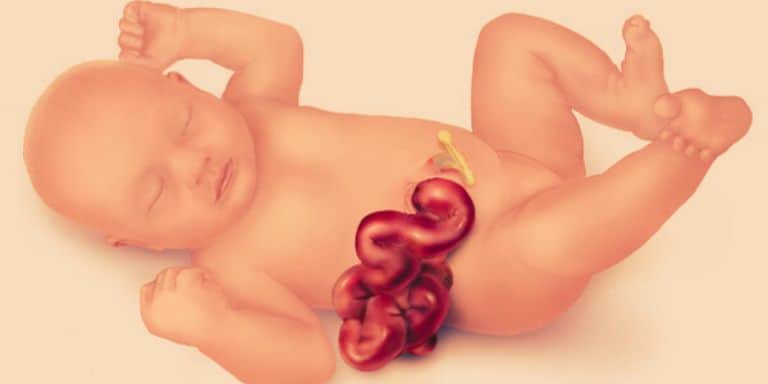Gastroshiza Explained Critical Causes Symptoms and Effective Treatment
Gastroshiza is a rare but serious birth defect that affects the abdominal wall of a newborn. Unlike other congenital anomalies, gastroshiza is immediately visible at birth because the baby’s intestines protrude through a hole near the belly button. This condition requires immediate medical attention, as it can lead to complications if not treated properly. Over the years, advances in neonatal surgery and intensive care have improved survival rates, but gastro shiza still poses challenges for families and healthcare providers.
What is Gastroshiza?
The term gastroshiza refers to an opening in the abdominal wall that allows the intestines, and sometimes other organs like the stomach or liver, to come outside the body without protective covering. This makes the exposed organs vulnerable to damage, dehydration, and infection. Unlike omphalocele, another abdominal wall defect, gastroshiza has no sac covering the protruding organs, which increases the risks associated with it.
Causes of Gastroshiza
The exact cause of gastroshiza is not fully understood, but researchers believe it results from abnormal development of the abdominal wall during early pregnancy. Some possible contributing factors include:
- Genetic influences: Although not directly inherited, certain genetic variations may increase susceptibility.
- Maternal age: Younger mothers, particularly those under 20, are at higher risk of having a baby with gastroshiza.
- Environmental factors: Exposure to harmful substances such as smoking, alcohol, and recreational drugs during pregnancy has been linked to a higher incidence.
- Nutritional factors: Poor maternal nutrition and lack of folic acid may also play a role.
Symptoms and Diagnosis
The primary symptom of gastroshiza is the visible protrusion of the baby’s intestines outside the body at birth. However, gastroshiza can often be detected during pregnancy through ultrasound imaging. The condition is usually identified in the second trimester when an ultrasound reveals free-floating intestines in the amniotic fluid. Blood tests, such as elevated alpha-fetoprotein (AFP) levels, may also indicate the possibility of this defect.
Complications Associated with Gastroshiza
Because the intestines are exposed, babies with gastroshiza face several potential complications:
- Infection risk: The lack of protective covering leaves organs open to bacteria.
- Dehydration and nutrient loss: Fluids can escape from the exposed organs.
- Bowel damage: Prolonged exposure to amniotic fluid can cause inflammation or twisting of the intestines.
- Growth problems: Some babies with gastroshiza may experience feeding difficulties and slower growth after birth.
Treatment Options
The treatment of gastroshiza always requires surgery, but the approach depends on the size of the defect and the condition of the intestines.
- Primary Repair: If the abdominal cavity is large enough, surgeons place the intestines back inside and close the abdominal wall in a single operation.
- Staged Repair (Silo Method): If the intestines are too swollen, doctors use a special sterile pouch called a silo to gradually return the organs to the abdomen over several days before final closure.
In both cases, newborns require intensive care, including breathing support, intravenous nutrition, and antibiotics to prevent infection.
Prognosis and Long-Term Outlook
With modern medical advances, survival rates for gastroshiza have improved significantly. Most babies recover well after surgery and go on to live healthy lives. However, some children may experience long-term complications such as:
- Digestive problems
- Bowel obstruction
- Slower growth or developmental delays
Ongoing medical follow-up is crucial to monitor nutrition, growth, and overall health.
Emotional and Financial Impact on Families
Beyond the medical challenges, gastroshiza also affects families emotionally and financially. The stress of having a baby born with a visible defect, undergoing surgery, and spending weeks or months in a neonatal intensive care unit (NICU) can be overwhelming. Parents may also face high medical expenses, especially if long-term care or multiple surgeries are required. Support from healthcare professionals, counselors, and parent support groups plays a vital role in helping families cope.
Prevention and Awareness
While gastroshiza cannot always be prevented, certain measures may reduce the risk:
- Healthy pregnancy choices: Avoiding smoking, alcohol, and drugs lowers the likelihood of birth defects.
- Proper nutrition: A diet rich in folic acid and essential vitamins during pregnancy supports healthy fetal development.
- Prenatal care: Regular medical checkups and early ultrasounds can detect gastroshiza early, allowing families to prepare for treatment.
Public awareness campaigns and maternal health programs can also help reduce the incidence of this condition.
Research and Future Directions
Ongoing research continues to explore the causes of gastroshiza and better treatment methods. Scientists are studying genetic patterns, environmental exposures, and maternal health factors to understand why some pregnancies are affected. Advances in fetal surgery and improved neonatal care also hold promise for better outcomes in the future. Additionally, innovations in artificial nutrition and protective coverings for exposed organs may further improve survival and recovery.
Conclusion
Gastroshiza is a serious congenital condition that requires immediate medical attention but is increasingly manageable with modern surgical techniques. Although its causes remain uncertain, the condition can be detected early through prenatal screening, and most affected babies survive with appropriate treatment. Families, however, face significant emotional and financial burdens, making medical support and counseling essential. Continued research and awareness efforts are vital to improving prevention, treatment, and long-term outcomes. Ultimately, understanding gastroshiza not only helps doctors and parents prepare but also offers hope for healthier futures for affected children.
